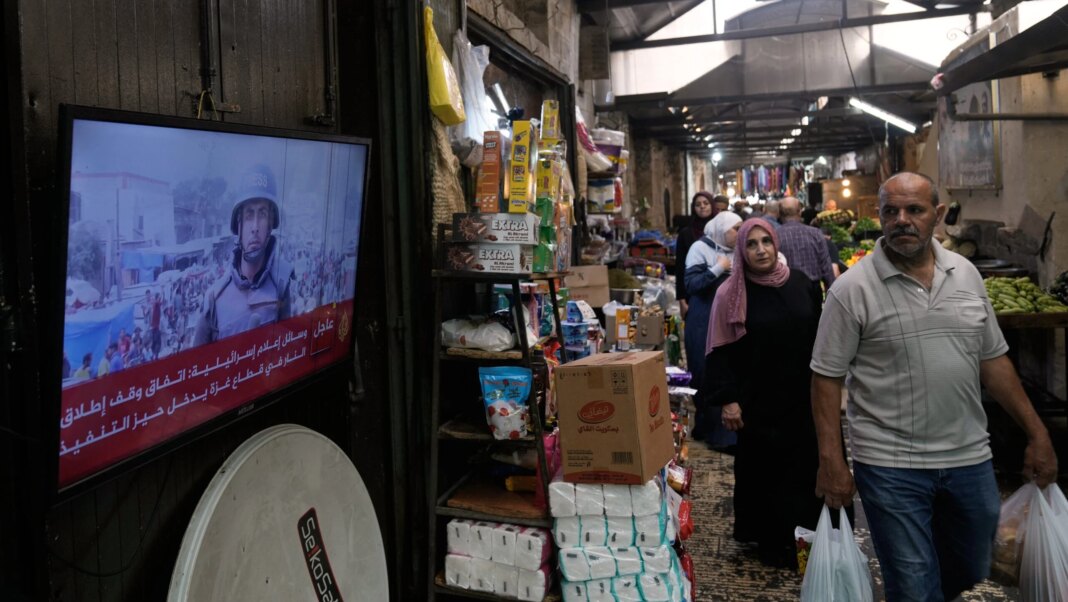The Breakthrough Deal: A New Chapter in the Gaza Conflict
A recent breakthrough deal has been announced, temporarily pausing the ongoing war in Gaza—an announcement that has elicited a mixture of hope and skepticism among various stakeholders. Will this move lead to what U.S. President Donald Trump termed “a Strong, Durable, and Everlasting Peace”? The pathway ahead is fraught with challenges, as it hinges on the uncertain interplay between Israel, Hamas, and the broader international community.
Background: The Long Road to Ceasefire
The war in Gaza, which has persisted for two harrowing years, has resulted in the deaths of tens of thousands of Palestinians and exacerbated regional tensions. Diplomatic pressure from the United States, Arab nations, and Turkey played a critical role in arriving at this point. International actors have openly called for an end to the conflict, emphasizing that a continued state of war further isolates Israel and intensifies suffering for the people of Gaza, whose lives have already been turned upside down.
The Deal: Immediate Steps Unveiled
The agreement reached outlines an initial phase that would see the release of the remaining living Israeli hostages within days in exchange for hundreds of Palestinian prisoners held by Israel. Israeli Prime Minister Benjamin Netanyahu plans to convene his Security Cabinet, with a full meeting to follow, to formalize approval of the deal. Reports indicate that a partial withdrawal of Israeli forces will commence, particularly from densely populated areas, marking a significant shift in the military dynamics on the ground.
As part of this initial phase, Hamas has committed to releasing 20 hostages shortly, with Israel responding by freeing hundreds of Palestinian detainees. Additionally, humanitarian aid trucks will begin flowing into Gaza, a critical step for the population suffering under dire conditions.
Troop Withdrawal: The Stakes of Security
Hamas has long demanded a complete withdrawal of Israeli troops from Gaza in exchange for hostages. Now, with this new agreement, there are tentative steps towards achieving that, albeit coupled with significant complications. While Hamas expresses reliance on guarantees from Trump regarding troop withdrawal, the timeline remains ambiguous—could this take weeks, months, or even years?
Israel, on the other hand, expresses hesitance about fully relinquishing military control over certain areas. The concept of a security buffer remains on the table, particularly in the Philadelphi Corridor, a crucial strip of land along the Gaza-Egypt border. This interplay underscores the significance of securing guarantees from both sides to maintain relative peace.
Disarmament: A Point of Contention
The issue of disarmament looms large. While Israel insists that Hamas must dismantle its military capabilities as a prerequisite for lasting peace, Hamas remains committed to armed resistance. Nevertheless, indicators suggest a possible willingness from Hamas to negotiate a “decommissioning” of its offensive weapons. Such a compromise, possibly involving oversight from a joint Palestinian-Egyptian committee, could pave the way for further discussions, but mistrust remains a significant barrier.
Future Governance in Gaza
A significant component of the deal involves the governance of Gaza post-conflict. While Hamas has ruled the territory since 2007, it has agreed to relinquish control to a technocratic administration. However, the nature of this governance structure is fraught with contention.
Israel has been clear that it does not wish to see the Palestinian Authority (PA) involved in the governance of Gaza, nor does it support the establishment of any arrangement leading towards a Palestinian state. The role of the proposed international body—tentatively called the Council of Peace—remains a point of debate. It could potentially take on an overarching governance role while Palestinian technocrats handle day-to-day operations.
The Stakes for Both Sides
As the agreement was announced after intense negotiations in Sharm el-Sheikh, the Israeli public expressed relief over the prospect of freeing hostages—a long-held priority. For Palestinians, however, the situation is more complex. While there is relief at the temporary cessation of hostilities and the potential for humanitarian aid, skepticism prevails regarding Israel’s long-term intentions.
Many fear that any breakdown in negotiations could lead Israel to resume its military campaign, particularly given the hard-line rhetoric from Netanyahu and his allies. Concerns are mounting among Palestinians that they may be left in precarious conditions, with significant parts of Gaza remaining in ruins and facing reconstruction challenges.
Navigating the Path Ahead
The international community, particularly the U.S. and its allies, will play a crucial role in sustaining pressure and promoting negotiations. Continued diplomatic engagement and support could deter Israel from escalating military actions if the talks falter. Conversely, an inconclusive outcome risks trapping Gaza in a limbo, where basic human needs go unmet, and both Hamas and Israeli forces remain active.
As the parties embark on this new chapter, the eyes of the world will be watching closely. The complex web of interests, fears, and hopes will test the resilience of this breakthrough deal, determining whether a genuine peace can emerge from the ashes of conflict.



